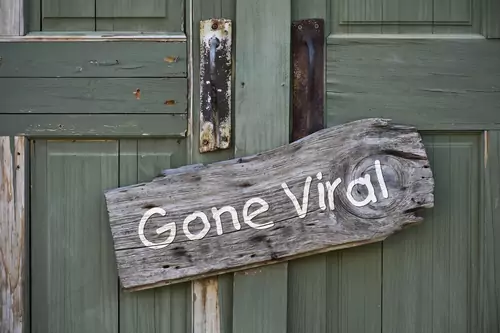By Jess Schafner
Last month, I heard John Crenshaw of Cincinnati-based Oodle speak about his area of expertise: digital marketing. In his presentation, he humbly mentioned a piece that his former company, Razorlight Media, had written back in April that is now doing extraordinarily well in Google’s SERPs (search engine results pages). I’d normally link to it (if you’re reading this on our online blog), but it’s virtually impossible NOT to find it, and you’ve got to see this for yourself.
So I’ll tell you how to find it: Go to Google and type in “web design companies Cincinnati.”
Here’s what you’ll see: The first few results will be paid ads. Then you’ll see a box with a map and a few local companies, some with reviews and some without. And the first result you’ll see after all that? The first organic result that comes up? “20 Awesome Web Design Companies in Cincinnati.” (There’s your link—I wasn’t going to leave you hanging.)
John Crenshaw published this on his site back in April, and it’s already dominating with a first-place ranking for this rather broad search query. What they did was they built a webpage that provided the exact information that matched the searcher’s intent. Someone who types in “web design companies in Cincinnati” likely would like to see a list and comparison of those companies, not just separate and individual listings on Google. John Crenshaw created a page that contained a compilation of interviews with 20 of the top web design companies in Cincinnati. They asked the questions a typical searcher would want to know (and that often, surprisingly, weren’t even on the companies’ websites) and included the unedited responses for each one, provided the contact information, and linked to their portfolios. And that was it. Seriously. It’s that simple.
And it’s ranking #1.
That got me thinking. Why not apply this thinking to the legal industry? Now this might not work for every practice area, or the approach might need to be altered. But I definitely see potential.
For instance, let’s say that you’re a personal injury attorney. Your prospects have been in a car accident, and what is probably pretty high on the list of things they’re searching for? Car repair shops. Well you know as well as I do that there are a million repair shops out there and choosing between them can be a hair-pulling process of investigation. Why not make it easy on them? You’re in the area, you’ve probably heard several various reviews through the years. Give them a list of the top ones. Start compiling some information if you want. Ask your clients how they liked the shop they used. With their permission, include their review in your list, either anonymously or not. You’re in a prime position to give quality feedback and guidance in this decision that your prospects will inevitably have to make. Link to each site (or link to their reviews on a directory listing, such as Yelp, if that’s all that’s there) and provide contact information. Just make their job as easy as possible.
What’s the benefit for you? Where do I begin?
- You’re providing relevant information that will assist them in making an important and pressing decision, whether they’re looking for an attorney or not, and bonus, you took them to an attorney’s site (your site), so now they ARE thinking about the possibility of retaining a lawyer, even if they weren’t from the start.
- You’re building trust by providing useful information without being marketing-heavy (in other words, you’re not overloading them with calls-to-action that THEY NEED A LAWYER).
- You’re decreasing your pogosticking rate (also known as bounce rate). So what is that? Every time a user clicks back from your site to the search results page, that is called pogosticking, and that dings your web authority (this is why we watch bounce rate in analytics closely). By including the contact information for exactly what they’re looking for right there on your site’s page, you are encouraging them to click through from your site directly to another site, rather than going back to the search results, thereby helping to balance out the negative effects that you are undoubtedly getting from users who are pogosticking on other pages of your site.
- Your traffic—from social to organic to referral—will increase, if all goes according to plan.
Of course, this is just one type of content strategy prediction. We can’t guarantee anything. No one can. Not even the whizzes at Moz. As Rand wisely points out, you have to allow yourself (or your marketing agency) the “freedom and support to fail many times.” Creating viral content—of which I am classifying John Crenshaw’s “20 Awesome Web Design Companies” page as viral content—is probably going to fail the first few times, maybe even the first nine or 10. And here’s where the linkbait bump comes into play. Once the linkbait takes, once the fish bite, it can boost your overall traffic from that point on. After the initial spike, it will undoubtedly drop back down, but the “new normal” may be higher than the old. So a site that was seeing 500 visits a month might double, triple, or even quadruple all because of one extraordinary piece of 10X content, as Rand calls—10X better than anything that’s already out there, than anything that your competition is producing.


